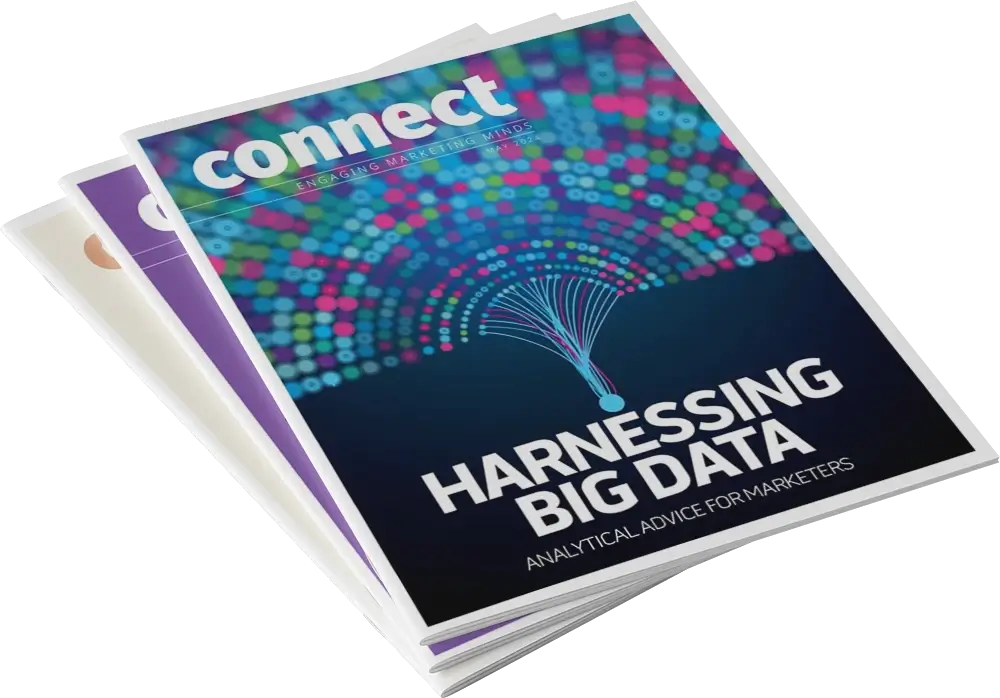Hillison, founder and CMO of the Fractional CMO and go-to-market advisory firm, asks that you think about how content consumption has evolved over the past 20-plus years. Then, everyone watched the same TV shows at the same time. Today, each of us curates our own unique experiences. B2B marketing is following this same path. The tools and delivery methods will continue to evolve dramatically.
But here’s what Hillison says won’t change: You will still find success from understanding your customers, knowing your competition and creating experiences that stand out. “While the marketing supply chain (MSC) will transform how we deliver value, these fundamentals remain central to winning markets.
Today’s marketing supply chain involves the entire ecosystem that brings a product from concept to consumer. This includes everything from sourcing materials and managing logistics to creating, distributing and delivering marketing assets across all platforms. In an effective marketing supply chain, the goal is seamless collaboration across all parts of the production and delivery process, which helps ensure brand consistency, optimized costs and faster time-to-market.
One of the biggest downfalls of any marketing supply chain is getting in your own way. Hillison says the cost of poor marketing operations shows up in several painful ways. First, your best ideas never reach the market. “Too many teams create great content that sits unused, sales decks that never align with campaigns and product stories that don’t match customer needs.”
“A robust MSC process lays a strong foundation that allows creative teams to focus on what they do best: innovating and generating fresh ideas.“
Suzanne Harston, Senior Office Coordinator, Newcrest Digital
The Entry Point 1 team recently worked with a company where three different teams created nearly identical content for the same target customer—triple the cost for the same result. Worse, each version told a slightly different story. The real killer was when the market opportunities slipped away because they were too slow to respond, i.e., while they were sorting through approval bottlenecks and misaligned teams, their competitors were winning deals.
“As Peter Drucker once said, ‘Management is doing things right; leadership is doing the right things,'” Hillison says. “The solution isn’t just better processes; it’s orchestrating your revenue team with clear direction and purpose. When everyone moves in sync, guided by data and aligned on outcomes, you turn chaos into a competitive advantage.”
In looking at successful B2B companies today, Hillison says there are three core components that consistently drive marketing performance. The first is a clear operating model for the revenue team. When product, sales, marketing, and customer success understand how their work connects, execution speeds up and results improve. The second is precise customer targeting. Deep understanding of buyers and their needs shapes every business decision, leading to up to 50% higher customer engagement rates. The third is business-focused metrics.
“We focus on what drives growth: pipeline velocity, sales conversion and customer retention. When these three components align, marketing becomes a true engine for business growth.”

Finding the kink in your chain
The first kink that Suzanne Harston and her team saw in Newcrest Digital’s marketing supply chain was when they started noticing inefficiencies in campaign execution—delays in content production and inconsistent quality. It quickly became clear that Newcrest’s existing processes couldn’t cope with the growing demands and scale of its operations, prompting the Senior Office Coordinator and her team to seek a more robust, scalable solution.
“Not understanding or managing your marketing supply chain can lead to wasted resources, missed deadlines and inconsistent brand messaging,” Harston says. “Without a clear strategy, you end up with frustrated teams and disappointed clients, which ultimately affects your bottom line and reputation.”
Harston says the solution is simple: By embracing a core MSC strategy, you can streamline your processes, reduce costs and ensure consistent quality across all marketing efforts. Nailing the process down enables better resource allocation and improved collaboration with suppliers, ultimately leading to faster time-to-market and enhanced campaign effectiveness.
“The solution isn’t just better processes; it’s orchestrating your revenue team with clear direction and purpose. When everyone moves in sync, guided by data and aligned on outcomes, you turn chaos into a competitive advantage.“
Tim Hillison, Founder & CMO, Entry Point 1
To create bigger, better, faster marketing supply chains, Harston believes the key is to prioritize building strong relationships with your suppliers, and to continuously evaluate and refine your supply chain processes. Stay flexible, and don’t be afraid to try new approaches that could enhance your efficiency and effectiveness. “A robust MSC process lays a strong foundation that allows creative teams to focus on what they do best: innovating and generating fresh ideas. With streamlined operations and reliable suppliers, marketers have more bandwidth to experiment and push creative boundaries.”
In addition, having your vendor’s senior leadership involved is crucial, a move that will help ensure alignment on strategic goals and facilitates smoother collaboration. “Leadership’s involvement demonstrates commitment, which can lead to more robust partnerships and improved outcomes,” Harston says.
As for the future of MSCs, Hillison and Harston believe the process will likely involve more integration with advanced technology, like AI and machine learning. As marketers move forward, there will be an increased focus on sustainability and ethical sourcing, reflecting growing consumer expectations and corporate responsibility. The best innovations in marketing come from purposeful, well-designed marketing assets that meet the customer where they are.
5 strategies to a more robust marketing supply chain
- Vendor Management – Select and manage partnerships with vendors (print, digital media, etc.) who align with your brand’s quality standards and timelines.
- Digital Asset Management (DAM) – Use DAM systems to streamline the organization and retrieve marketing assets, which help maintain brand consistency across all channels.
- Sustainability Practices – Incorporate eco-friendly practices in material sourcing, production and distribution to meet consumer demanded responsible practices.
- Data-Driven Decisions – Leverage data analytics to understand demand patterns, optimize resource allocation and personalize marketing efforts.
- Automation and AI – Utilize automation tools to increase efficiency, reduce errors and enable faster decision-making.
Sources: UpGuard’s “A Guide to Vendor Relationship Management;” Smartsheet’s “The Enterprise Work Management Platform”

